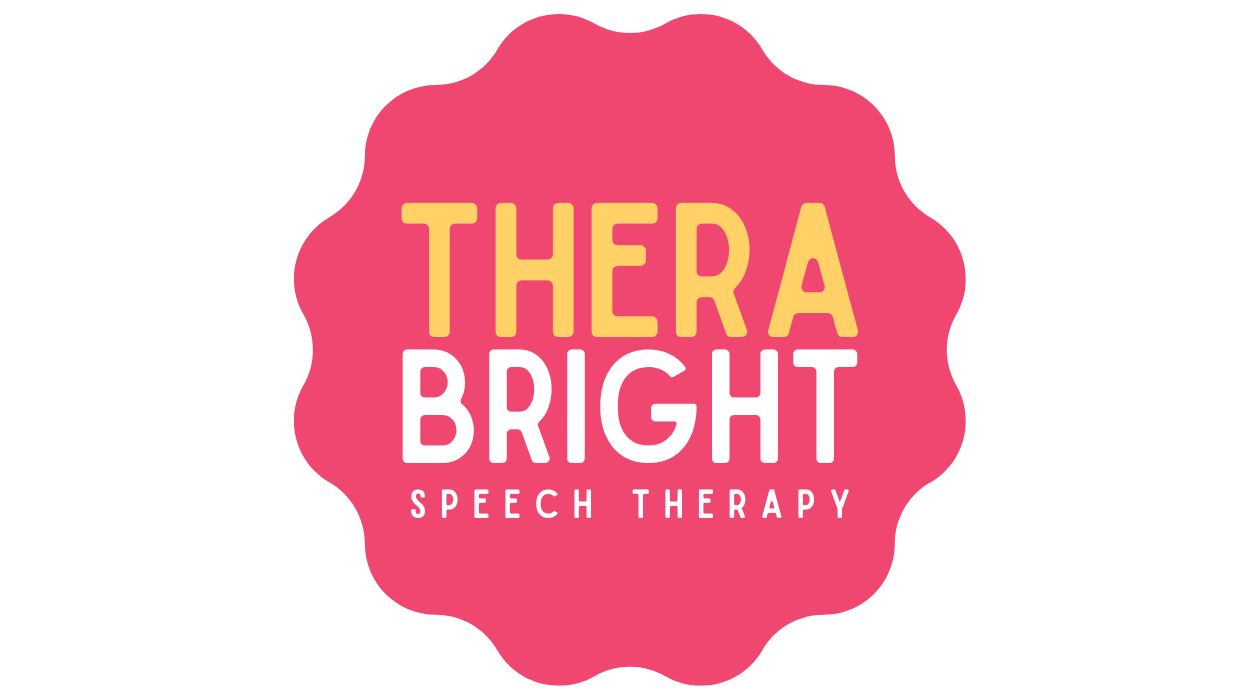What We Treat
TheraBright specializes in the treatment of speech sound disorders, while also offering full support in language and fluency for preschool and school-aged children.
Speech Sound Disorders
A speech sound disorder is a type of communication disorder when someone has consistent difficulty producing sounds or words correctly. These difficulties may make it harder for others to understand what the child is saying. Children are usually able to be understood by strangers 75-100% of the time by the age of 3. Most children should also be able to produce nearly all speech sounds by the age of 5.
There are different types of speech sound disorders:
Articulation Disorders - difficulty producing specific sounds
For example, producing a distorted "r” or speaking with a lateral, “slushy” lisp
Phonological Disorders - consistent difficulty producing sound patterns or rules
For example, dropping sounds at the end of a word (ca/cat); producing /t/ for /k/ (tow/cow) or /d/ for /g// (dough/go); dropping sounds from consonant blends (nake/snake, boom/broom); leaving off syllables in multi-syllabic words (nana/banana), and many more
Motor Speech Disorders - difficulty with planning or controlling the muscles needed for speech; this may include childhood apraxia of speech (CAS) (where the brain has difficulty planning and sequencing the movements for speech) or dysarthria (weak muscles used to produce speech). Motor speech disorders are more rare in children.
For example, not producing words the same way each time or saying shorter words more clearly than longer ones (CAS); slurred or mumbled speech that is too slow or too fast (dysarthria)
Speech sound disorders can also be related to orofacial myofunctional disorders, which are patterns of abnormal movement or positioning of the muscles of the face, mouth, and tongue that may affect speech and swallowing. This may lead to difficulty with certain speech sounds, such as tongue thrust leading to distorted production of /s, z, t, d/, and more.
Language Disorders
Expressive Language Disorders
Expressive language disorders occur when a child has difficulty using words and sentences to communicate their thoughts and feelings. This may involve struggling to find the right words, forming sentences that lack clarity, or having a limited vocabulary. As a result, the child might have trouble telling stories, answering questions, or joining in conversations.
Receptive Language Disorders
Receptive language disorders involve challenges in understanding spoken language. Children with these disorders may have difficulty following directions, answering questions, or comprehending what others are saying. They may seem lost in conversations or have trouble grasping new words and concepts, affecting their ability to learn and interact with others.
Mixed Receptive-Expressive Language Disorders
Mixed receptive-expressive language disorders combine both expressive and receptive challenges. Children may struggle to express themselves clearly while also having difficulty understanding language. This can impact their ability to communicate effectively at home and school, making it hard for them to engage in verbal interactions, follow instructions, or convey their ideas and emotions.
Recognizing these disorders early can lead to effective support and strategies to enhance a child's communication skills.
Fluency Disorders
Fluency disorders are speech difficulties that affect how smoothly a child speaks. This can include interruptions in speech such as repetitions of sounds, syllables, or words, as well as prolonged sounds or blocks. Children with fluency disorders may struggle to express themselves clearly, which can lead to frustration and impact their confidence.
Early intervention is crucial for children experiencing fluency disorders. Addressing these challenges at a young age can help them develop effective communication skills, improve their self-esteem, and reduce the risk of ongoing difficulties in the future. By working with a speech therapist, children can learn strategies to manage their speech fluency, making it easier for them to express their thoughts and feelings. Supporting them early on can lead to positive speech and language development that benefits their overall learning and social interactions.
Can a speech sound disorder or language disorder impact my child’s ability to learn to read?
The American Speech-Language-Hearing Association reports the following:
Up to 23% of 4- to 6-year-old children were estimated to have Speech Sound Disorders (Eadie et al., 2015; Jessup et al., 2008; McKinnon et al., 2007).
Poor speech sound production skills in kindergarten children have been associated with lower literacy outcomes, especially in children with concomitant language or phonological awareness difficulties (Hayiou-Thomas et al., 2017; Overby et al., 2012; Peterson et al., 2009). Approximately 25% of children receiving school-based speech services may also qualify for reading-related services (Tambyraja et al., 2020).
TheraBright recognizes the potential connection between speech and language disorders and later reading success, and is able to incorporate strategies and interventions which support reading success within therapy sessions.




